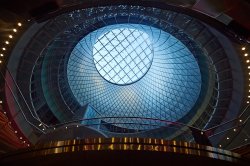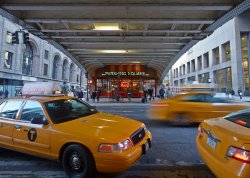Those are the two links that come up in google search.
Hansens photos usually don't contain any people and if they do, their faces are rarely recognizeable.
Same goes for the other link.
The german legal situation regarding street photography is in a grey zone.
In reality you should be ready to frequently get the police called on you, if you don't get assaulted right away. I remember having a guy swear and scream at me because I took a photo of a massive apartment complex and he claimed that on of the apartments is his.
Long lenses could come in handy
How much of this - reluctance (and accompanying rage) would you put down to historical (and cultural) experiences? Where in Germany were you photographing?
Now, while I well realise that the Nazi era (and accompanying state inspired surveillance) is long over, but the communist regime of the DDR - which was one of the more controlling of (as well as intrusive into) its subjects lives of the Warsaw Pact regimes - lasted until the end of 1989, and many people still around today would have experience of it and memories informed by it.
The reason I mention this is that I have come to realise that the ability to photograph 'freely' in a public space (without experiencing resistance, dislike, suspicion - all of which will alter, or distort, any image you take) has been informed by the experiences of the inhabitants of that same public space with regard to their right of access, permissions, and 'freedoms'.
I remember trying to take photographs in Belarus some years ago; as long as I was photographing a statue of Lenin, shoulders covered in snow, there was no problem. However, when trying to photograph old (or new) buildings, or squares, or anything else, people scuttled, at speed, to try to escape being framed in a shot. Thus, the experience of living in a totalitarian regime, where everything was subject to possible surveillance, informed their response to any camera in any public space.
Last edited:





